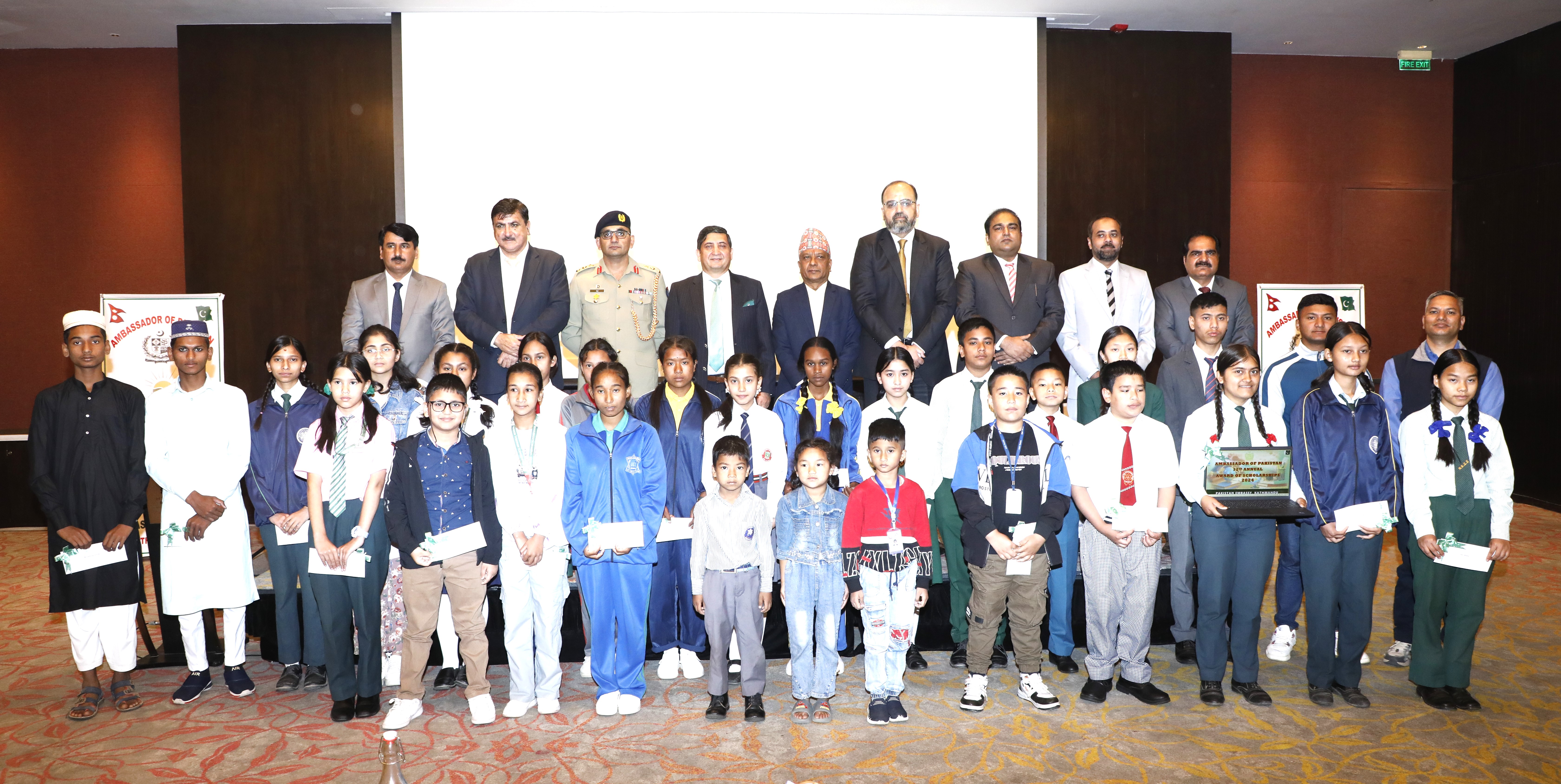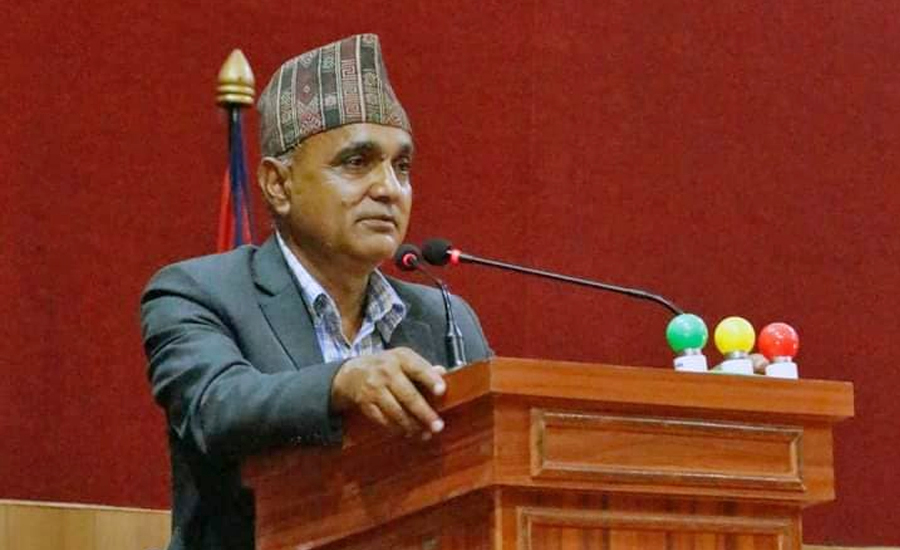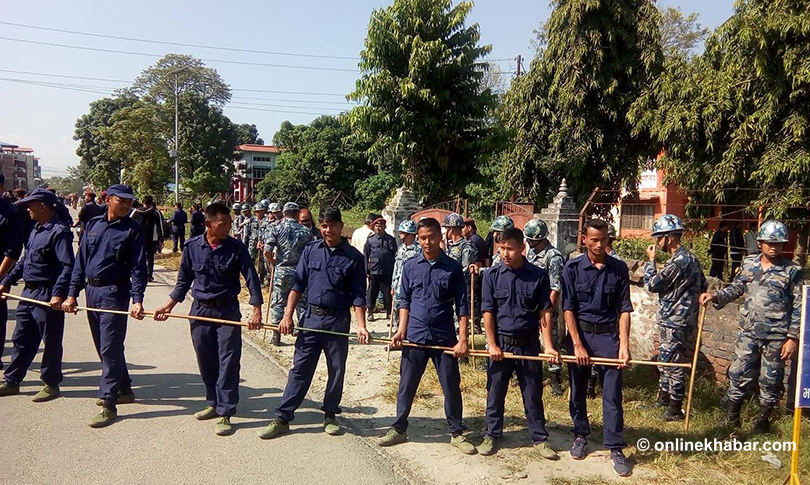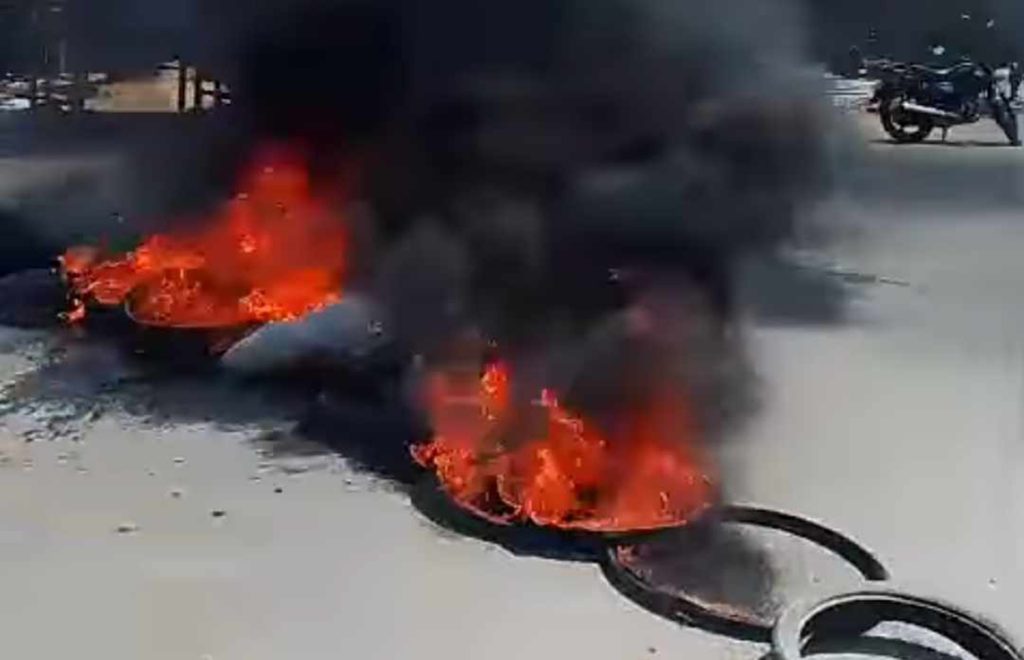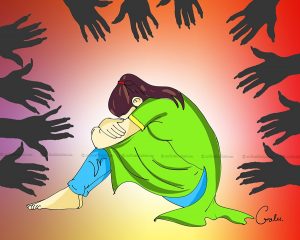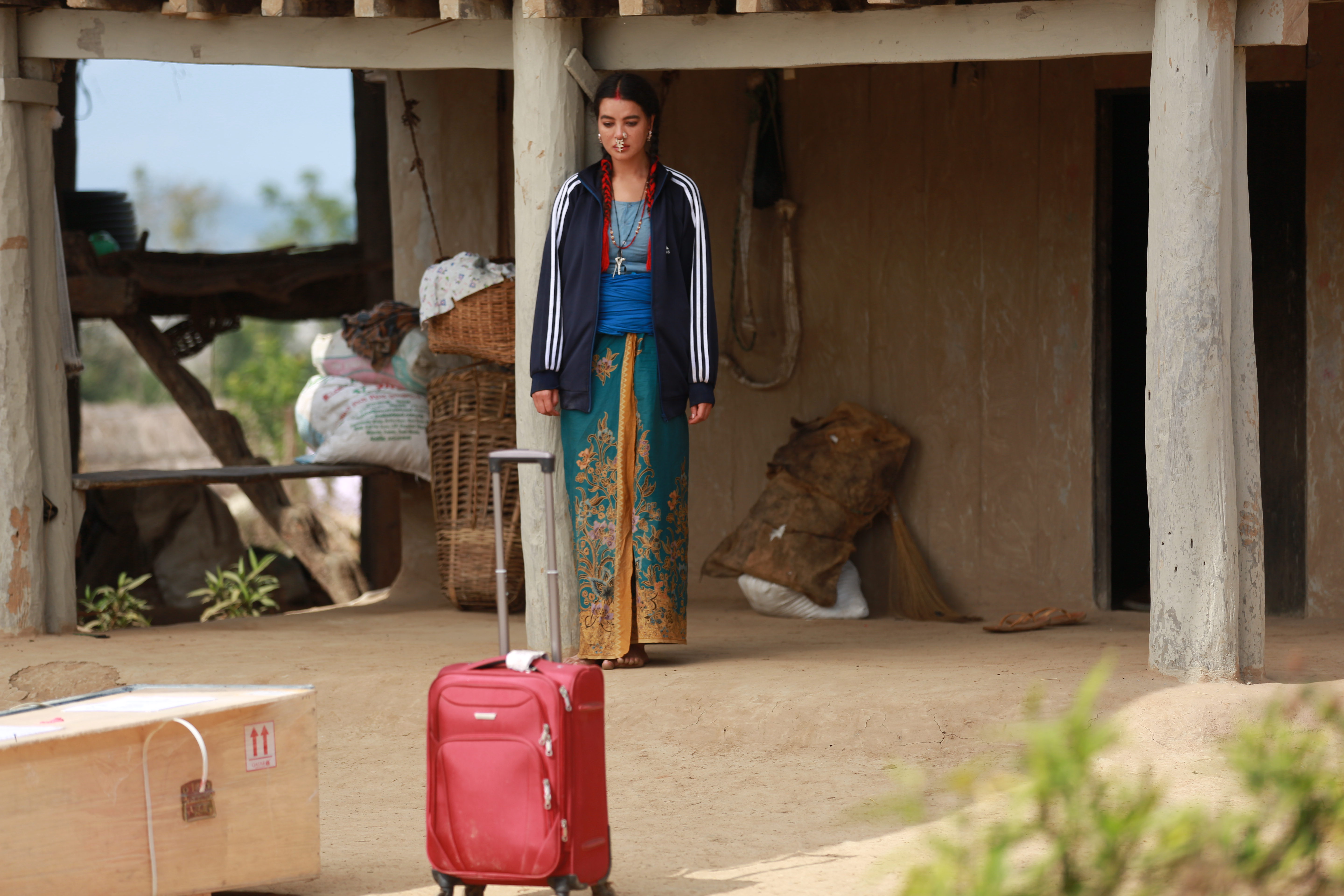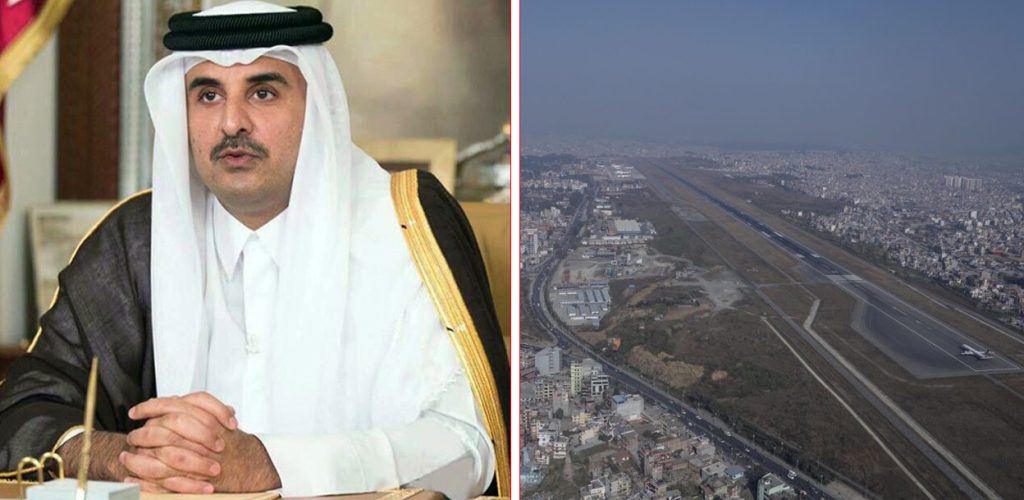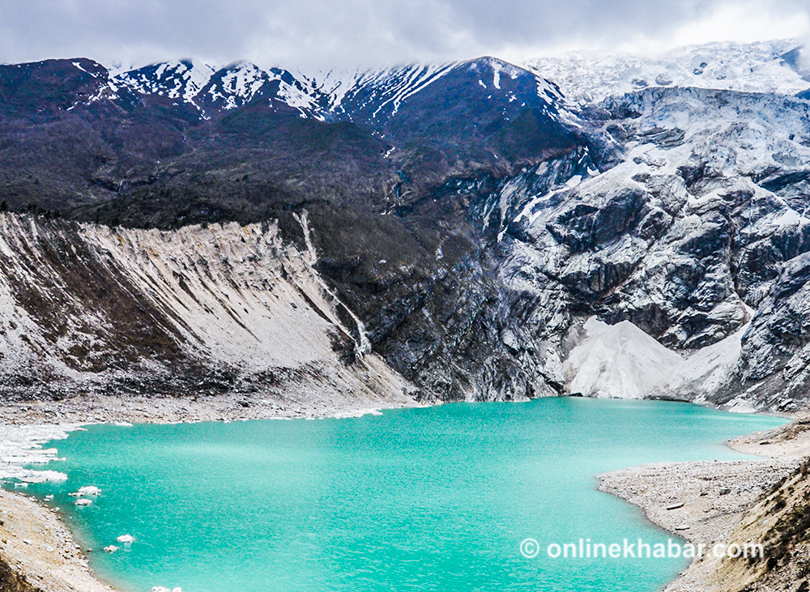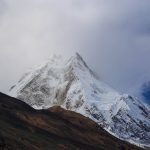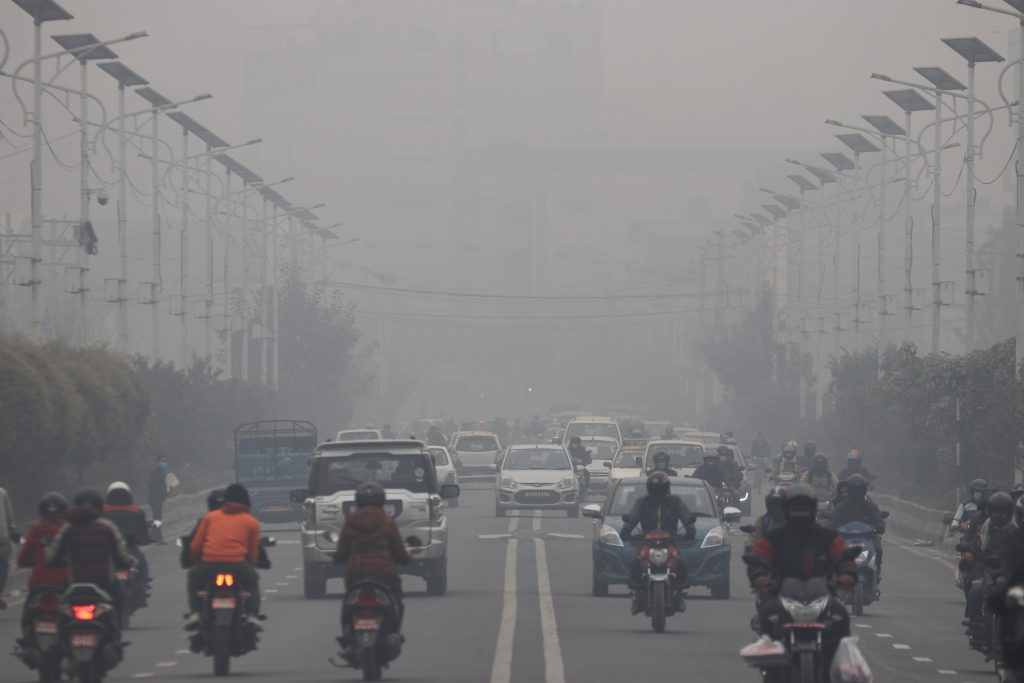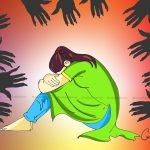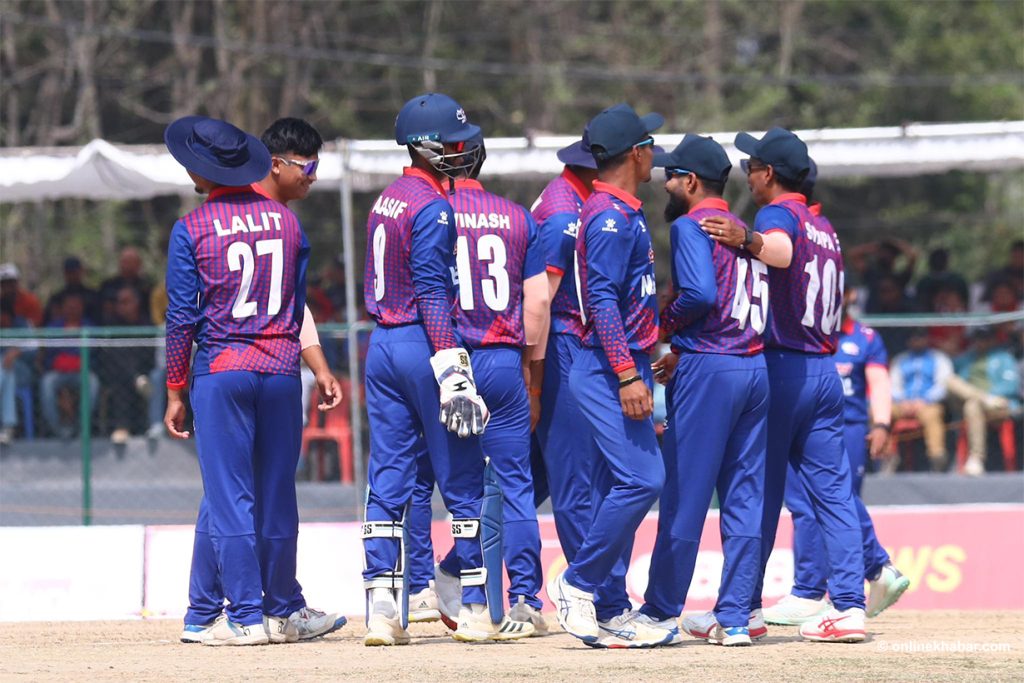Two months after the Gorkha earthquake, I was looking at the remains of Naule Biswakarma’s house. Wheat grains buried in the rubble had sprouted. Cracks streaked across the walls like rivers in a physical map. Rainwater had seeped into the walls, creating blotches of chocolate brown on the tawny surface. The writing on the wall was that the walls would soon melt back into the mud. A mottled toad had moved in, lured by the increased dampness of the floors.
Months before the earthquake, old age and poor health had restricted Biswakarma to the bed. The quake brought down his house on him, turning his bed into his deathbed. He was the only person to be killed by the earthquake in and around Nepane, Gorkha.
Two hours later I was in the verandah of a local school teacher’s house, listening to Bi Maya recount her life’s story, asking her to speak a little louder so that the tape recorder would catch her voice over the patter of rain on the tin roof. Bi Maya was Naule Biswakarma’s daughter. Suffering could have claimed her as its own.
Bi Maya’s husband had died years ago, leaving her to raise five children, all sons. She had been living with her father ever since her mother’s death. And then the earthquake took her father and their house. She also lost the land on which their house had stood. The land and the house had belonged to her mother’s father. Now that her father was dead, her mother’s brothers had claimed it.
Almost all of the 140,000 rupees the government had given her as compensation for her father’s death Bi Maya had spent to buy a tiny piece of land. The rest she used to repay loans. She was living in a tarp-roofed shack that she and two of her sons, one fourteen, the other thirteen, had rigged. To feed her family she took other people’s cattle out to graze, cut and carried grass weeded and hoed and planted, sometimes all of these in a day, day in day out. Her daily wage for this was a hundred rupees.
As I got ready to leave after the interview, which she had related with frequent giggles and one sigh (“Two of my sons didn’t even call after the earthquake.”), a look of motherly worry supplanted her sheepish smile when she came to know that I didn’t have an umbrella. Sir lai dukkha hune bhayo!
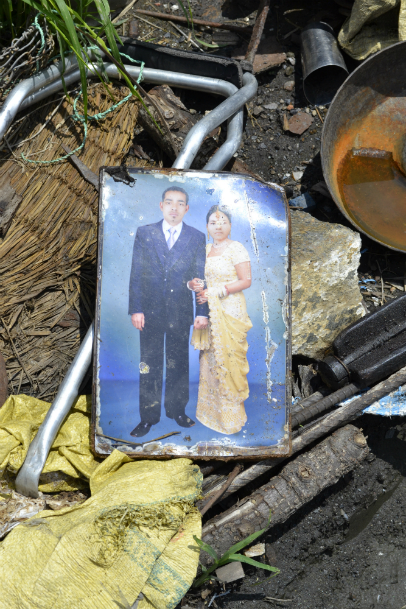
Day after day, interview after interview, over and over again, I heard stories whose recurrent themes were loss, hardship and uncertainty. The people I talked to were deep in debt. They had lost their houses. Their sons did not even call home from Dubai or Malaysia or Qatar, the same sons they had sent to those places by taking loans that were way beyond their means. Some of them wanted to come home to help, but they couldn’t afford to or their employers wouldn’t grant them leave. Sons living in Nepal didn’t always prove pillars of strength either. Some of them came, stayed a night, and went back to their lives in the towns and cities.
The villagers had the materials needed to re-build but they didn’t have enough labour. Some couldn’t afford to hire labour. For all they knew, they might have to live under tarp roofs for many months to come.
In one corner of their courtyards were the corrugated roofing sheets and a small pile of tools provided by relief agencies. In another their wooden ploughshares languished, washed clean by the rains, denied its union with the succulent earth. Should they build a shelter before the monsoon came down with its full force? Would they be able to, with so few young men and carpenters and labourers around? Would they be able to plant the rice on time? These were the doubts that made moving on from the earthquake a plod.
The people I met in and around Nepane hardly, if ever, indulged in self-pity. Perhaps after decades of living in a place as unforgiving as a Nepali village, they had developed a deep distrust for it.
This habit of theirs made maintaining objectivity very hard at times, at others, almost effortless.
On the other hand, decades of living in a place as unforgiving as a Nepali village had fostered in them a weakness for mirth. The timing of their unrestrained, infectious and often uproarious laughter never failed to surprise me. I would be interviewing a group of women whose houses had been destroyed. Many of them were without a man in their house. One of them would be talking about the debilitating impact of the earthquake on her life.
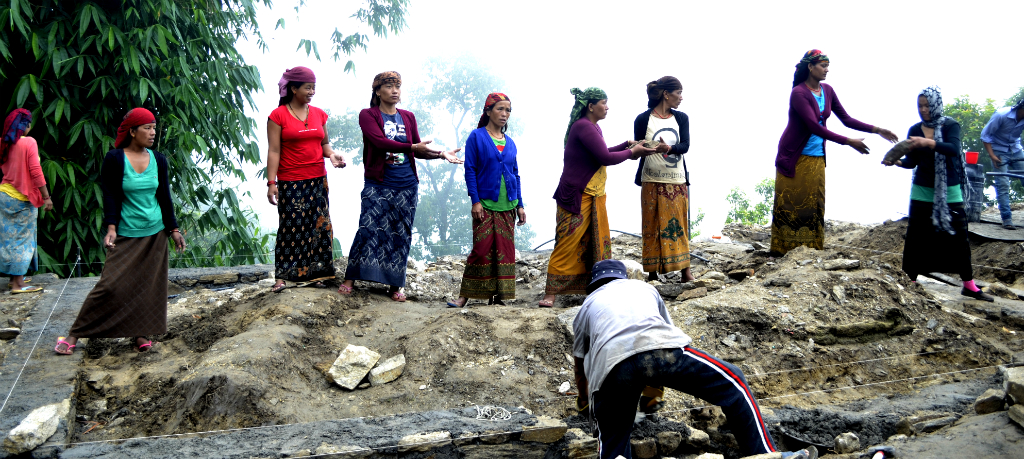
The room would be silent, the other women listening, staring at the walls or their own feet. And almost as soon as the speaker had completed a poignant sentence, an old woman would crack a joke about how she had slipped while trying to run during an aftershock, and the room would erupt into laughter as if they were all at a dinner party.
The same laughs reverberated in the half-collapsed verandahs and inside tarp huts. They were tremors against which somberness collapsed like a house of cards.
After a few days in the village and several conversations with its residents, I began to notice that the villagers regarded pity and sympathy as things too precious to be squandered on oneself. They were to be saved, to lavish later, say, on the guy who was going around asking questions and scribbling in notebooks, and who had suffered (in their eyes) because he had had to walk in a drizzle without an umbrella.

During my time in the village, I met families that had lost their entire stock of grains. Others had lost a buffalo that was their only source of income. But everyone I met, without exception, had salvaged their dignity. Every day, they wore it when they went out to their rendezvous with hardships, when they waltzed with suffering.
They showed me that the most valuable possessions – valuable because they enable us to stay on our feet when life starts throwing punches – are the things we carry inside of us. On my second evening in the village, I stopped near a chautara to look at the surroundings. A cool breeze blew, cooling the body into forgetting the overwhelming loss all around.
Before me was the classic Nepali highland landscape of endless rows of hills, billowing clouds, and a silence that evoked silence. The only thing new in the scenery was the clusters of tangerine tarpaulin shacks.
A woman came out from a poky shelter of blue tarpaulin. She asked me where I was from and I inquired what she had lost in the earthquake. We talked for a while. Then, as I turned around to leave, she said, in words that would have found the mark even if I was someone who had lost a house, “The air is sweet in our village, bhai.”
The Gorkha earthquake shifted Kathmandu by a couple of meters. It cracked hills and pulverised houses. But after spending two weeks in villages where hardly a building was left standing, every time a person shattered through her victim’s shell with a fit of laughter, I realised that the quake had barely scratched the surfaces of their spirits.




